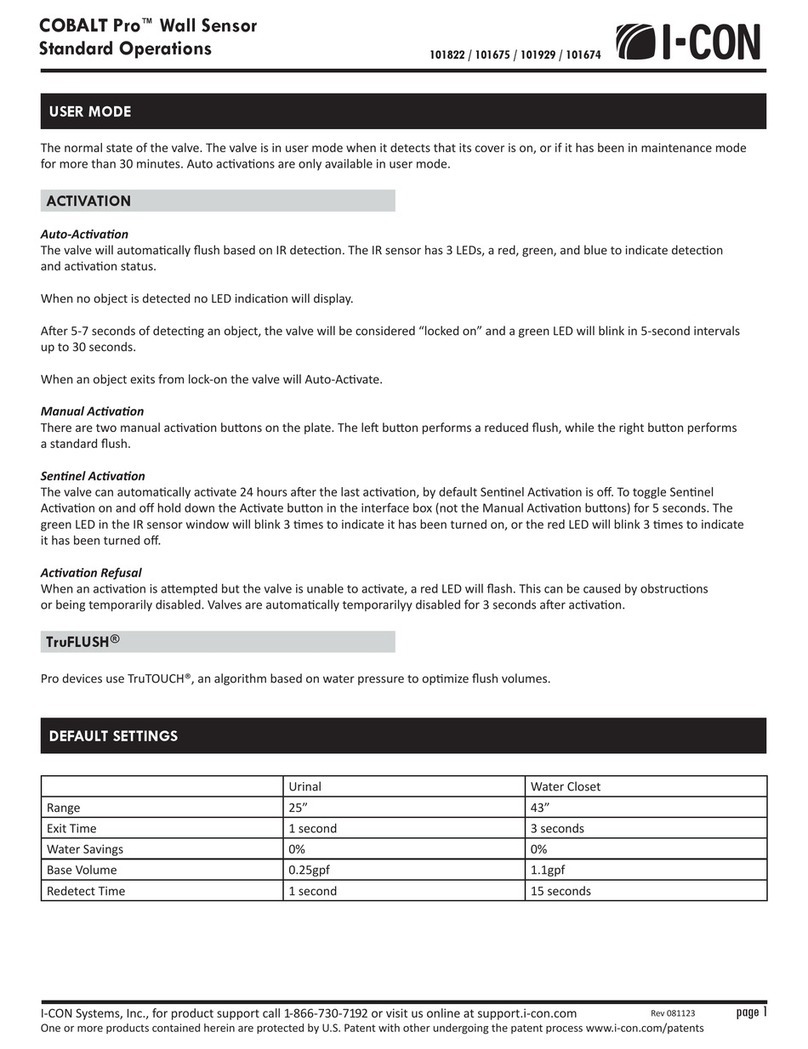
14 15
INSPECTIONS DE SÉCURITÉ ET OBSOLESCENCE
Avant chaque utilisation
Examinez la semelle pour vous assurer qu’elle est en bon état et qu’elle est fixée solidement au reste de la botte. Vérifiez que la doublure n’est pas
arrachée ou déchirée. Vérifiez que le cuir de la tige et des brides d’ajustement n’est ni perforé ni craquelé. Vérifiez que les lacets, les boucles et les
brides d’ajustement ne sont ni cassés, ni obstrués par quoi que ce soit. Des bottes de protection mal attachées ne protègent pas leur utilisateur. Si
les bottes de protection ou toute partie constituante sont usées, remplacez-les immédiatement.
En cas d’impact ou d’accident
En cas d’impact ou d’accident, les composants clés des bottes de protection peuvent être irrémédiablement abîmés et elles peuvent ne plus être
en mesure d’assurer la protection limitée contre les chocs décrite à la rubrique « Contraintes et limitations d’utilisation » ci-dessus et aux rubriques
« Performance » et « Limites de protection » ci-dessous. Il est possible que ce dégât ne soit pas visible à l’œil nu. En cas d’impact ou d’accident,
remplacez les bottes. Vous pouvez acheter de nouvelles bottes Truant auprès d’un distributeur Icon®.
Règle des 2 ans
En général, les EPI légers tels que les bottes Truant doivent être remplacés au moins tous les deux ans, même s’ils n’ont pas subi de dégâts. Une
simple inspection des EPI peut ne pas suffire à repérer les dégâts éventuels.
AVERTISSEMENTS DE SÉCURITÉ
Positionnement et fixation des EPI
Pour obtenir la meilleure protection possible, vous devez placer les EPI sur les parties du corps à protéger, et de manière à couvrir intégralement
les zones exposées. Si les EPI intègrent des renforts de protection, pour que ces derniers soient correctement positionnés sur les parties du corps à
protéger, il est essentiel que les EPI soient à la bonne taille. Dans tous les cas, l’équipement adéquat a été fourni de manière à ce que l’EPI reste
fermement en contact avec le corps.
Bottes
Il est très important que les bottes de protection vous aillent. En fonction de leur conception et de leur fabrication, les divers types de bottes de
protection vous iront différemment. Portez uniquement des bottes de protection adaptées à votre morphologie. N’utilisez pas de bottes de protection
qui ne sont pas adaptées à votre morphologie. Assurez-vous que les bottes de protection vous vont parfaitement et ne sont pas trop serrées. Assurez-
vous que votre talon ne peut pas trop se soulever. Assurez-vous que vos orteils ne sont pas trop à l’étroit.
Recommandations d’utilisation et ajustement
Répétez l’opération pour chaque botte : retirez les brides d’ajustement en cuir des boucles placées sur le côté extérieur. Desserrez suffisamment les
lacets pour qu’il soit possible de tirer la languette vers l’avant et d’insérer le pied dans la botte. Chaussez la botte. Placez le pied tout au fond de la
botte. Assurez-vous que la botte vous va. Vous devez sentir que votre pied est bien maintenu dans la botte, sans être trop serré. Le pied doit être de
la même longueur que la botte. Serrez les lacets en tirant sur les extrémités jusqu’à ce qu’ils soient ajustés, puis nouez-les. Il est possible d’ajuster
la botte en serrant ou desserrant les lacets. Assurez-vous de toujours nouer les lacets après les avoir ajustés. Refaites passer la bride d’ajustement à
travers la boucle de la botte en tirant dessus. La bride ne doit pas ressortir de la boucle. Ensuite, insérez à fond l’embout de boucle dans le trou de
bride d’ajustement correspondant. Vous pouvez ajuster la longueur des brides d’ajustement en insérant chaque embout de boucle dans un autre trou
de la bride correspondante. Vérifiez bien que votre pantalon ou votre chaussette ne sont pas coincés dans la bride d’ajustement. Assurez-vous que les
bouts des lacets sont coincés sous la bride d’ajustement afin qu’ils ne puissent pas se prendre dans les repose-pieds, le levier ou d’autres pièces de
la moto. Vérifiez que le port de ces bottes ne réduit pas votre capacité à utiliser les commandes de votre moto.
Pour une protection et une sécurité maximales, les bottes de protection ne doivent causer aucune gêne et ne doivent pas limiter la liberté de
mouvement du motard ou restreindre l’accès aux commandes de la moto, dans une position normale de pilotage. Si votre pointure n’est pas disponible
dans ce modèle de bottes de protection, veuillez essayer un autre type de bottes de protection certifiées CE.
PERFORMANCE
Les bottes Truant ont subi un examen « CE de type » pour assurer leur conformité à la directive 89/686/CEE. En outre, elles ont été analysées et
testées pour vérifier leur conformité à la norme technique EN 13634:2010, à l’exception du chapitre 4.2.1 relatif à la hauteur de la tige. Elles ont
cependant été testées pour assurer leur conformité au protocole relatif aux chaussures montantes (Low boot height requirement protocol, 1re révision
datée du 11 mai 2012). Développé avec l’approbation des organismes italiens notifiés, ce protocole a été proposé comme future modification de la
norme EN 13634:2010.
La norme européenne EN 13634:2010 prévoit deux niveaux de performance en termes de protection. Le degré de risque auquel est exposé un motard
est étroitement lié à l’utilisation qu’il fait de sa moto et à la nature de l’accident dans lequel il peut être impliqué. Dans le cadre de la norme EN
13634:2010, la performance de niveau 1 offre la protection minimum requise pour les bottes en cas d’accident et un niveau de confort optimum
pour tous les types d’activités motocyclistes. Il appartient au motard de décider si son style de conduite ou le type d’activité qu’il pratique l’exposent
à un risque d’accident plus élevé. Dans ce cas, une performance de niveau 2 est prévue. Cependant, cette protection supplémentaire implique des
vêtements plus lourds et moins confortables qui peuvent ne pas convenir à tous les motards.




























